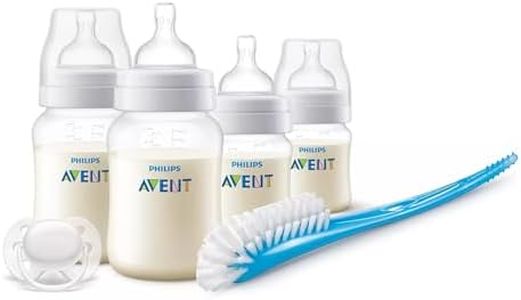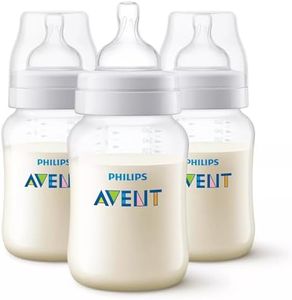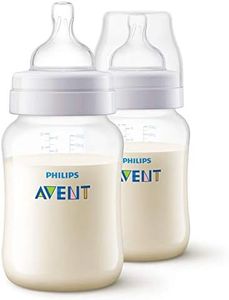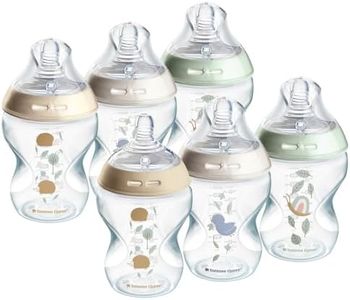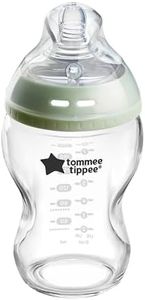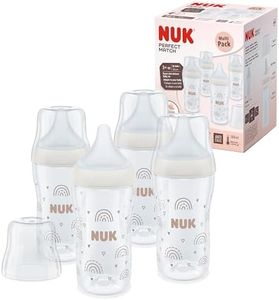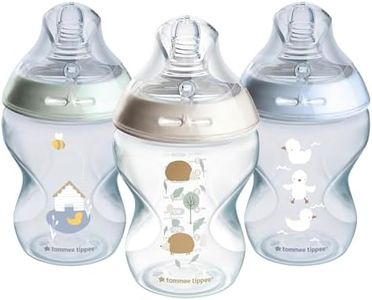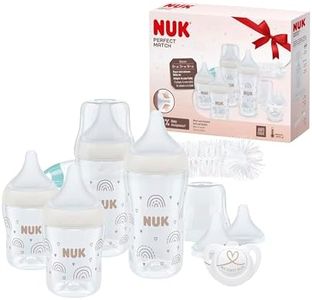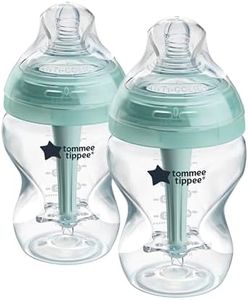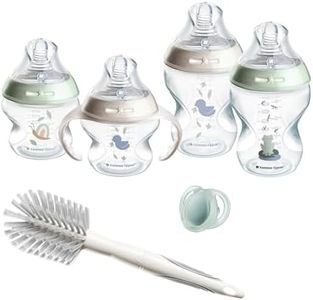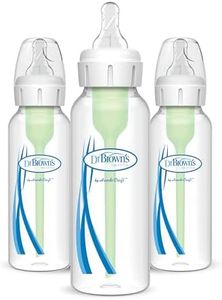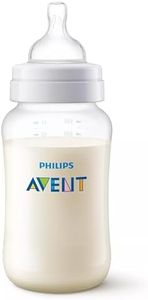We Use CookiesWe use cookies to enhance the security, performance,
functionality and for analytical and promotional activities. By continuing to browse this site you
are agreeing to our privacy policy
10 Best Anti Colic Bottles
From leading brands and best sellers available on the web.Buying Guide for the Best Anti Colic Bottles
Choosing the right anti-colic bottle can make a big difference for both babies and parents. Anti-colic bottles are designed to help reduce air intake during feeding, which may help alleviate symptoms of colic like excessive crying, fussiness, and gassiness. When picking the best anti-colic bottle for your baby, it's important to focus on features that directly impact how well the bottle manages airflow, how easy it is to clean and use, and how comfortable it is for your baby to feed from. Remember that every baby is different, so it might take a bit of experimentation to find the ideal fit.Venting SystemThe venting system is what makes an anti-colic bottle unique. This system helps to regulate the air flow, preventing babies from swallowing excess air during feeding, which can lead to discomfort. There are several types of venting systems: some bottles have a separate internal vent, while others feature vents built right into the nipple or rim. Internal vents are usually more complex and may be more effective for babies with severe colic, while built-in vent nipples offer a simpler design that’s easier to clean. If your baby shows mild signs of colic, a basic vented nipple might be enough, but if colic is more severe, you might want to try bottles with advanced internal venting.
Nipple Shape and FlowThe shape and flow rate of the nipple is crucial for comfort and feeding efficiency. Nipple shapes can range from traditional narrow ones to wide, breast-like designs that are meant to help babies switch between breast and bottle more easily. Flow rates can be slow, medium, or fast. Newborns and younger babies usually do better with slower flow rates, as this mimics breastfeeding and prevents gulping, while older babies may need a faster flow. Consider your baby’s age and how they feed to decide which nipple type and flow rate will be most comfortable and effective.
Ease of CleaningBecause anti-colic bottles can come with extra parts due to complex venting systems, cleaning can be more involved compared to standard bottles. Bottles with fewer parts are generally easier and quicker to clean, whereas models with multiple venting pieces may require more thorough cleaning and assembly. If convenience is important to you or you don’t want to spend much time cleaning, look for bottles designed for easy disassembly and cleaning by hand or in the dishwasher. Parents who are comfortable with a detailed cleaning routine might opt for more advanced venting systems.
Bottle MaterialAnti-colic bottles are usually made from plastic, glass, or silicone. Each material has its benefits: plastic is light and unlikely to break, glass is durable and easy to clean but heavier, and silicone is flexible and soft. Plastic bottles are practical for most users but if you prefer eco-friendly or chemical-free options, you might lean towards glass or silicone. Consider your daily routine — such as traveling and bottle storage — and your preferences regarding material safety and durability.
Bottle Size and ShapeBottle size refers to the volume it can hold, while the shape can affect how easy it is to grip and feed. Smaller bottles (around 4 ounces) are suitable for newborns and young infants, while larger bottles (8 ounces or more) are better for older babies. The bottle's shape, whether straight or contoured, can also affect how comfortable it is for you or your baby to hold during feeding sessions. Think about your baby’s current feeding volume and comfort needs when picking a size and shape.
